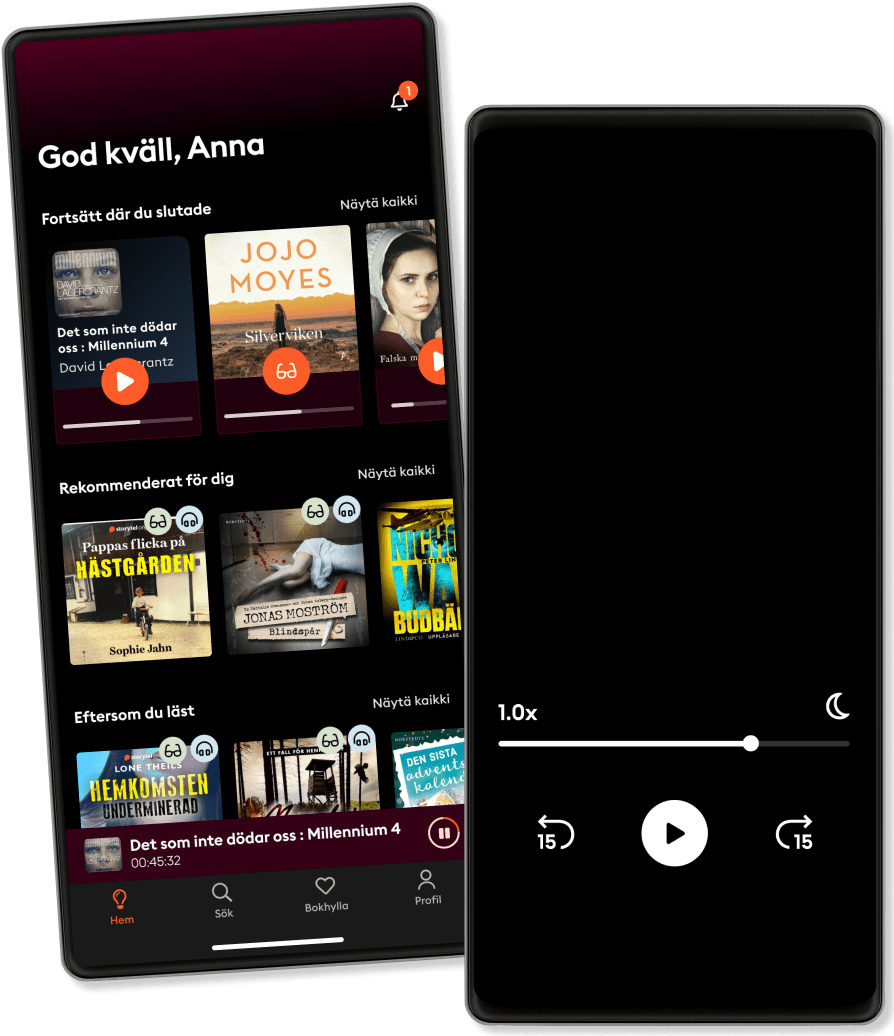الاستماع والقراءة
خطوة إلى عالم لا حدود له من القصص
- اقرأ واستمع إلى ما تريده
- أكثر من مليون عنوان
- العناوين الحصرية + أصول القصة
- 7 الشهر يورو في EGP89 يوم تجربة مجانية، ثم
- من السهل الإلغاء في أي وقت

Uranium Frenzy: Saga of the Nuclear West
- بواسطة
- الناشر
- اللغة
- اللغة الإنجليزية
- Format
- الفئة
التاريخ
A history of the U. S. Atomic Energy Commission’s need for uranium ore in the 1950s, the frenzied search, and the aftermath.
Now expanded to include the story of nuclear testing and its consequences, Uranium Frenzy has become the classic account of the uranium rush that gripped the Colorado Plateau region in the 1950s. Instigated by the U. S. government’s need for uranium to fuel its growing atomic weapons program, stimulated by Charlie Steen’s lucrative Mi Vida strike in 1952, manned by rookie prospectors from all walks of life, and driven to a fever pitch by penny stock promotions, the boom created a colorful era in the Four Corners region and Salt Lake City (where the stock frenzy was centered) but ultimately went bust. The thrill of those exciting times and the good fortune of some of the miners were countered by the darker aspects of uranium and its uses. Miners were not well informed regarding the dangers of radioactive decay products. Neither the government nor anyone else expended much effort educating them or protecting their health and safety. The effects of exposure to radiation in poorly ventilated mines appeared over time.
The uranium boom is only part of the larger story of atomic weapons testing and its impact in the western United States. Nuclear explosions at the Nevada Test Site not only spurred uranium mining, they also had a disastrous impact on many Americans: downwinders in the eastward path of radiation clouds, military observers and guinea pigs in exposed positions, and Navajo and other uranium mill workers all became victims, as deaths from cancer and other radiation-caused diseases reached much higher than normal rates among them. Tons of radioactive waste left by mines, mills, and the nuclear industry and how to dispose of them are other nagging legacies of the nuclear era. Recent decades have brought multiple attempts by victims to obtain compensation from the federal government and other legal battles over disposal of nuclear waste. When courts refused to grant relief to downwinders and others, Congress eventually interceded and legislated compensation for a limited number of victims able to meet strict criteria, but did not adequately fund the program. Recently, Congress attempted to fix this shortfall, but in the meantime many downwinders and others holding compensation IOUs had died. Congressional and other efforts to dispose of waste have lately focused on Nevada and Utah, two states all too familiar with nuclear issues and reluctant to take on further radioactive burdens.
“In a perceptive and touching narrative, Ringholz (The Wilderness Handbook) recalls that the Federal government in the early 1950s subsidized uranium mining for the coming atomic age… . Ringholz intrigues the reader with an expert blending of science, adventure, industry mania, finance, human triumph and despair and shameful official neglect. ” —Publishers Weekly
“The frenzied search for a reliable domestic source of uranium ore needed by the U. S. Atomic Energy Commission in the 1950s is the subject of Ringholz's breezy narrative, which is populated with colorful characters… . This is good popular reading for general collections in public libraries. ” —Library Journal
© 2020 Utah State University Press (كتاب ): 9780874214734
تاريخ الإصدار
كتاب : ٥ أكتوبر ٢٠٢٠
واستمتع آخرون أيضًا...
- The Button: The New Nuclear Arms Race and Presidential Power from Truman to Trump Tom Z. Collina
- The Soviet Nuclear Weapons Program: The History and Legacy of the USSR's Efforts to Build the Atomic Bomb Charles River Editors
- The Manhattan Project: The Making of the Atomic Bomb Al Cimino
- In the Shadow of the Bomb: Oppenheimer, Bethe, and the Moral Responsibility of the Scientist S. S. Schweber
- Nuclear Weapons: A Very Short Introduction Joseph M. Siracusa
- Small Wars, Big Data: The Information Revolution in Modern Conflict Eli Berman
- J. Robert Oppenheimer: The Life and Legacy of the Father of the Atomic Bomb Charles River Editors
- Drone Warfare: Killing by Remote Control Medea Benjamin
- Enola Gay: Mission to Hiroshima Gordon Thomas
- What's Wrong With Special Forces Training: From A Personal Trainer's Perspective Trevor Clinger
- أسطورة أحمد خالد توفيق - E01 خلف جابر
4.4
- ملخص كتاب كيف تتحدث مع أي شخص 92 خدعة صغيرة: اثنتان وتسعون خدعة صغيرة، لنجاح كبير في العلاقات ليل لاوندز
3.5
- فقط اصمت وافعلها!: كيف تبدأ وتستمر براين تريسي
4.1
- أوراق شمعون المصري الموسم الأول أسامة عبد الرءوف الشاذلي
4.6
- ملخص كتاب عقل هادئ: كيف توقف التوتر وتحدّ من نوبات القلق وتقضي على التفكير السلبي ستيف سكوت
4.3
- المطارد حسن الجندي
4.5
- أرض زيكولا عمرو عبدالحميد
4.1
- فاتتني صلاة (الإصدار الصوتي الثاني) إسلام جمال
4.8
- النباتية هان كانغ
3
- القيصر: التاريخ السري لفلاديمير بوتين طاهر المعتز بالله
4.5
- بضع ساعات في يوم ما محمد صادق
2.8
- ملخص كتاب الذكاء العاطفي ترافيس برادبيري
3.5
- العادات الذرية جيمس كلير
4.5
- فن اللامبالاة: لعيش حياة تخالف المألوف مارك مانسون
4.3
- 30 يوما مع الله فيصل أحمد بخاري
4.6
ما مميزات اشتراك Storytel؟
أكثر من 200000 عنوان
وضع الأطفال (بيئة آمنة للأطفال)
تنزيل الكتب للوصول إليها دون الاتصال بالإنترنت
الإلغاء في أي وقت
شهري
قصص لكل المناسبات.
حساب واحد
حساب بلا حدود
1 حساب
استماع بلا حدود
إلغاء في أي وقت
سنويا
قصص لكل المناسبات.
حساب واحد
حساب بلا حدود
1 حساب
استماع بلا حدود
إلغاء في أي وقت
6 أشهر
قصص لكل المناسبات.
حساب واحد
حساب بلا حدود
1 حساب
استماع بلا حدود
إلغاء في أي وقت
عربي
مصر